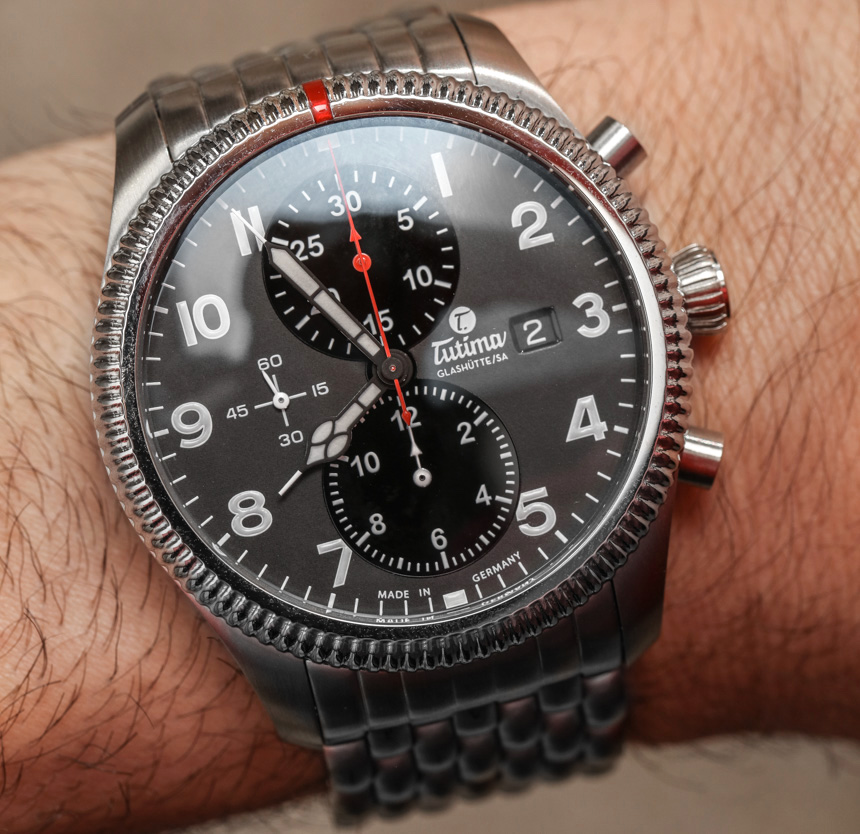
Among the most collectible historic military pilot watches in the world are those produced in Glashütte, Germany, during World War II. Many of them were produced by Tutima, who seemed to more or less start out in the business of making aviation watches. Many of their vintage models require a keen eye to spot as they only say “Glashütte” on the dial, with the small Tutima “T” above it. Today, Tutima continues to make professional-themed pilot and aviation watches, with the Tutima Grand Flieger Classic Chronograph 6402 being among the most classic-looking of their modern models.
Flieger (pilot) watches continue to be so popular for a few reasons. First is the tendency for these watches to exude “purpose.” Legibility ranks very high on their list of priorities, as does wearing comfort and durability. In my opinion, pilot-style and diving-style watches together probably represent the most popular types of timepieces sold today. This is, of course, despite the fact that few people who wear these watches are actually taking them into the air (as an aviator) or under the water.
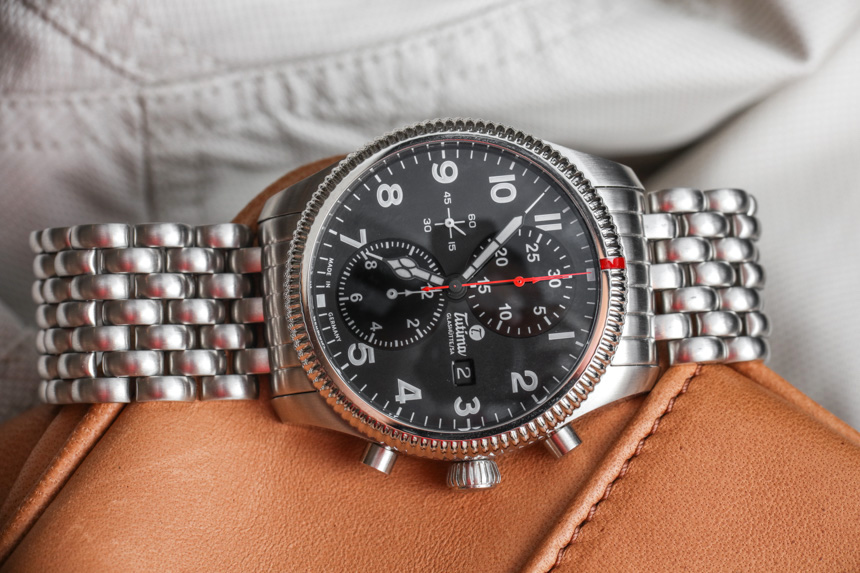
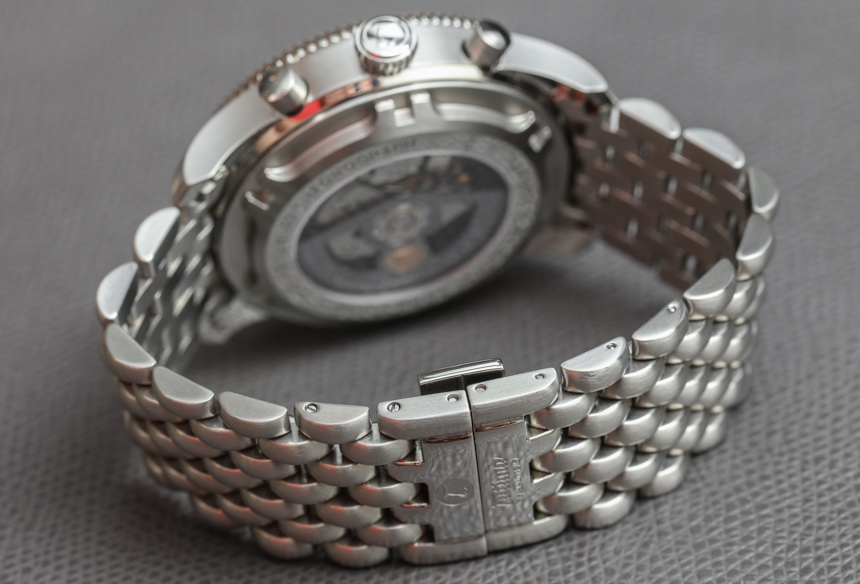
A few years ago, Tutima reshaped itself, and with that came the reference 6402-01 (leather strap) and 6402-02 (steel bracelet) Tutima Grand Flieger Classic Chronograph models. Note that Tutima also produces the 6102 Grand Flieger Classic Automatic watches which eschew the chronograph complication for a day/date indicator on the three-hand dial. Larger and a bit more visually bold than actually more classic models, today’s Tutima Grand Flieger Classic Chronograph watches are mid-range priced for Tutima, and offer aficionados a lot of modern features in addition to a handsome historic look.
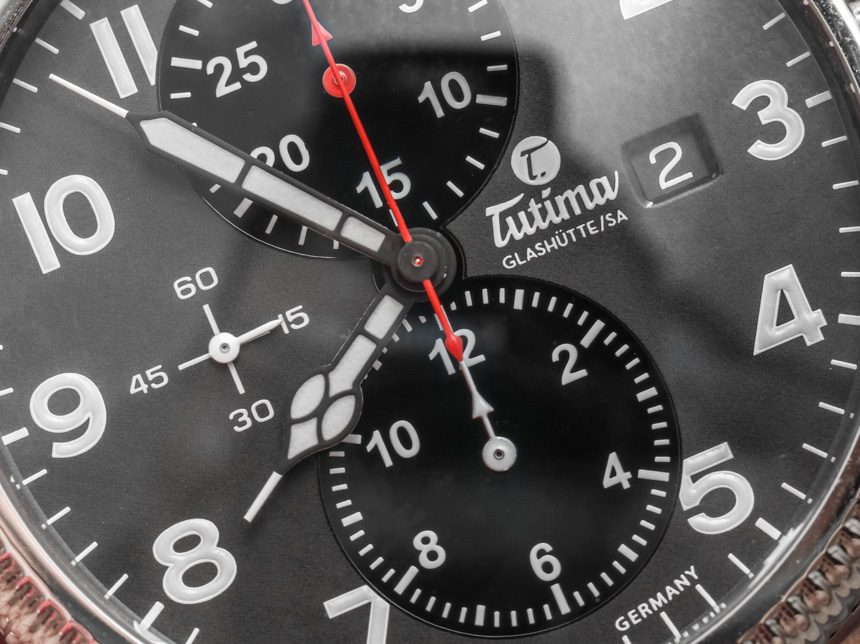
Several years ago, I reviewed the Tutima Grand Classic Power Reserve watch here, which I would consider to be a modern ancestor of this 6402 Tutima Grand Flieger Classic Chronograph. Not too much has changed, and you can see that Tutima is evolving a core look that many collectors value. That look begins with hands which say “vintage tool watch.” I don’t know if these traditional-style hands began on aviator watches, but you see them often represented in historic tool watches for a few good reasons. First, they offer a lot of space to paint luminant so that you can read the time in the dark. Next, they are reasonably legible. Finally, the hour and minute hands are visually distinct, which further increases readability.
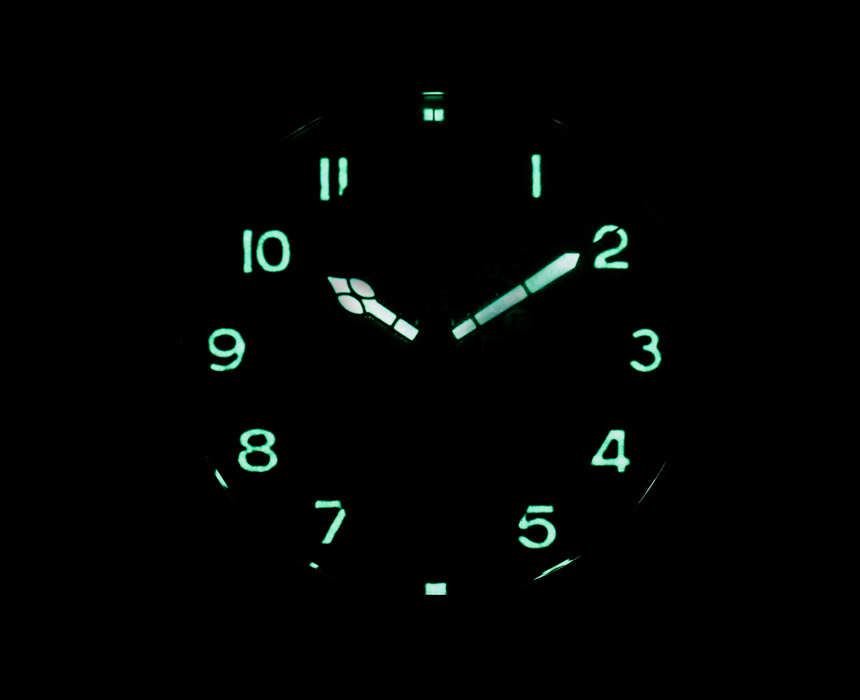
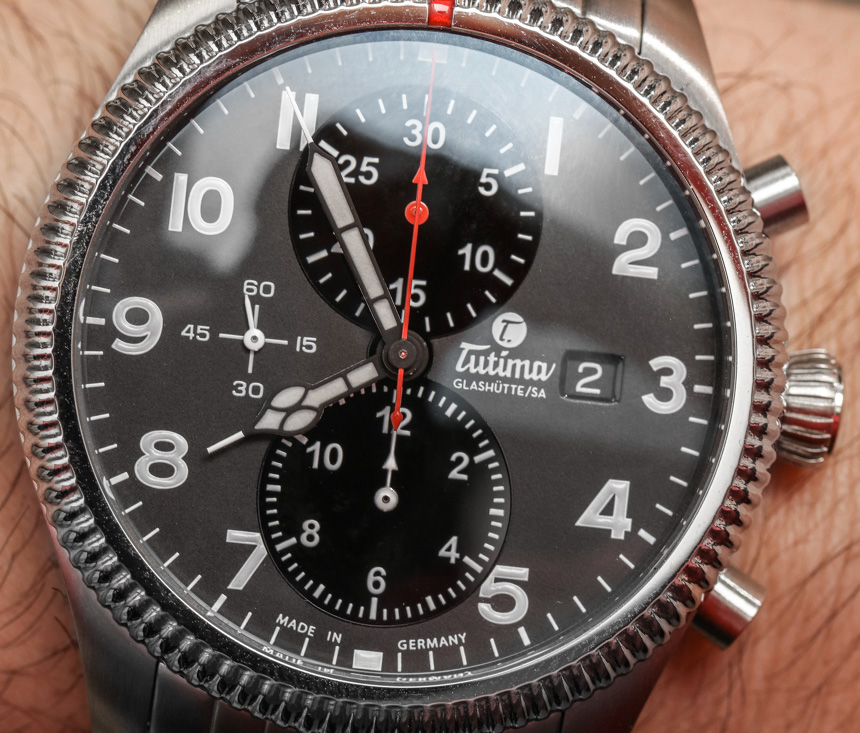
While somewhat cut off by the chronograph subdials, the dial is also given a full ring of purposeful-looking Arabic numeral hour markers. With this 6402 version of this classic pilot watch, Tutima decided to go for a flatter dial. Others had more raised, applied hour markers. Visual distinction is provided through different textures and shades. For example, most of the face is a matte dark gray, whereas the two chronograph subdials are a deeper black with a slightly different texture.
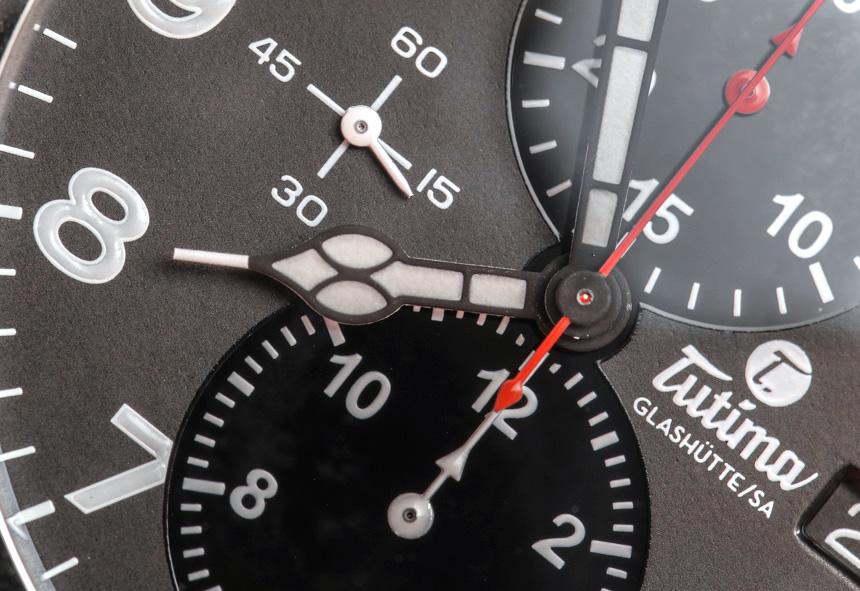
Red accent colors are also an important style cue, and the color is thankfully used rather sparingly. Red is used on the dial for the chronograph seconds hand and minute hand, but not the chronograph hour hand. I am sure there is a good reason for that, but typically when it comes to color coding hands, the hands for the time are one color, and the chronograph hands are another. Thus, while it probably aesthetically looks better the way Tutima rendered the dial of the Tutima Grand Flieger Classic Chronograph, my OCD tells me that the chronograph hour counter hand should also be red.
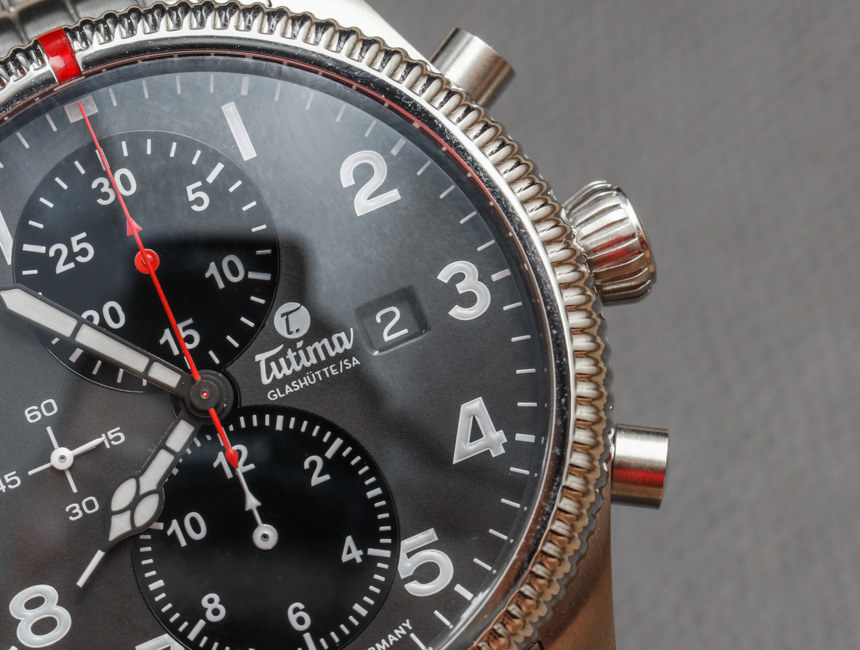
Red is further used for the “0 marker” on the bi-directional rotating coin-edged bezel. Tutima continues the tradition of making this somewhat archaic style of rotating bezel. I say archaic as they only have a single reference point (the red mark), and are thus theoretically less useful than a rotating bezel on, say, a dive-style watch that has more markers. The bezel has a pleasant, fluid operation to it. I don’t think many people will use it, but it is a nice extra to play with.
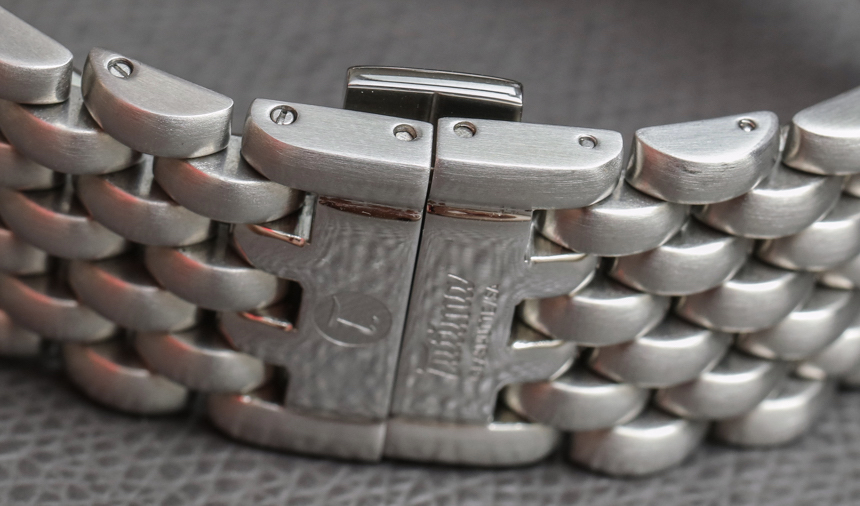
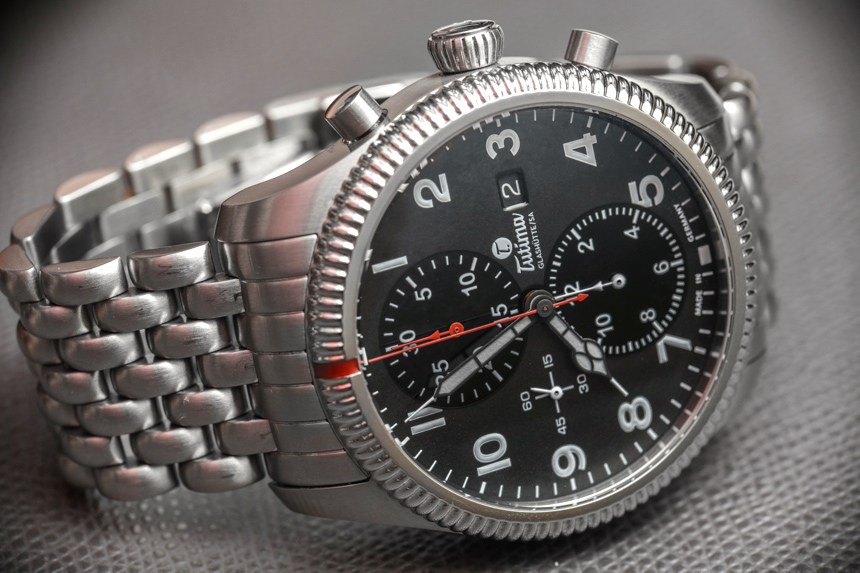
The overall dial design is classic but veers just enough from the norm to be considered different. As I said, Tutima dutifully used traditional elements such as familiar hands and hour makers, along with the overall core look of the watch. But the contrasting subdials that overlap on the hour markers a bit are a more modern design element. Also notice that, akin to other modern Tutima watches (such as the Tutima M2 reviewed here), the running seconds subdial is small and de-emphasized. This creates the look of a two-subdial chronograph watch (which itself is a bit more classic than three subdials). The dial also has a relatively non-distracting date window, which is fittingly given a dark-colored disc to match the dial.
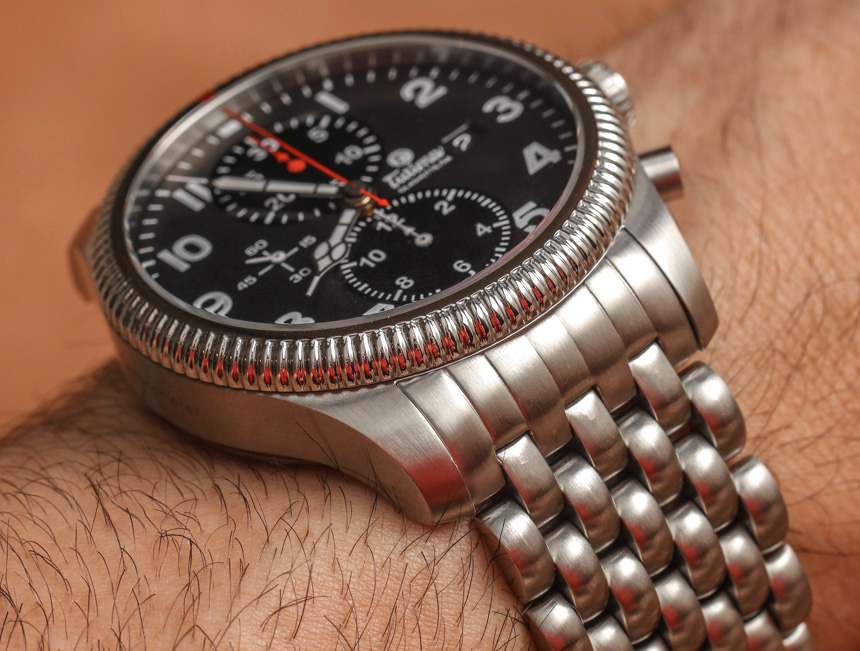
On the wrist, the Tutima Grand Flieger Classic Chronograph is extremely comfortable and the case is made very well. In steel, the case is 43mm wide, 16mm thick, and durable with 200 meters of water resistance (crown screws in). Over the dial is a domed AR-coated sapphire crystal, and over the rear of the case is an exhibition caseback window. The case wears a bit larger than 43mm given the thickness as well as the prominent spacing of the lugs to accommodate a nice, wide strap or bracelet. Most of the case is brushed, and the finishing is excellent, on par which what you would expect from a modern German tool watch in steel at this price.
